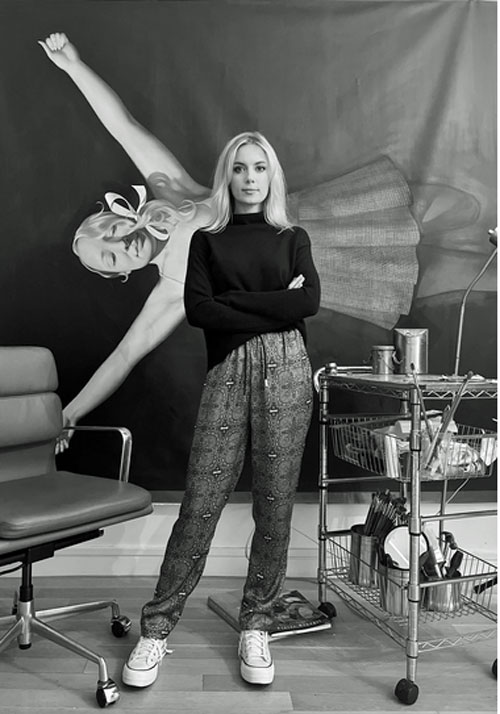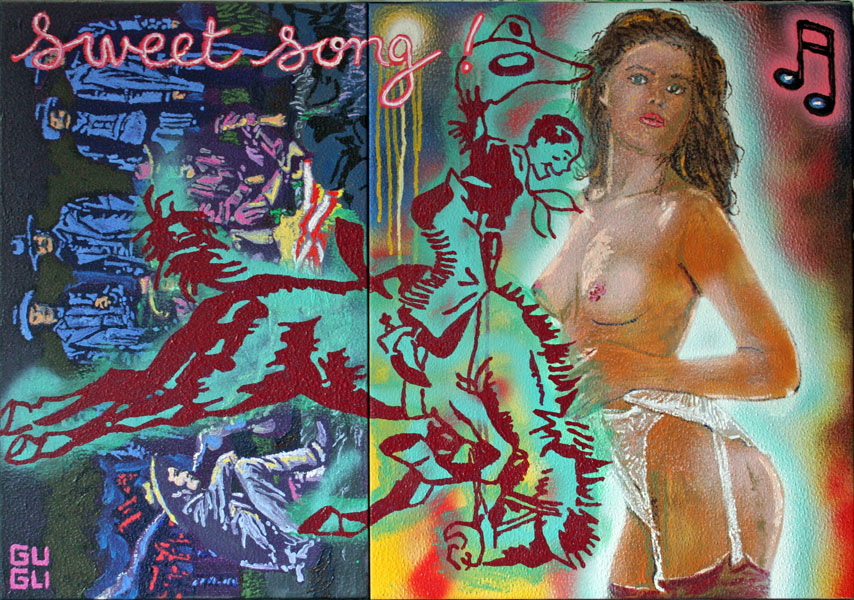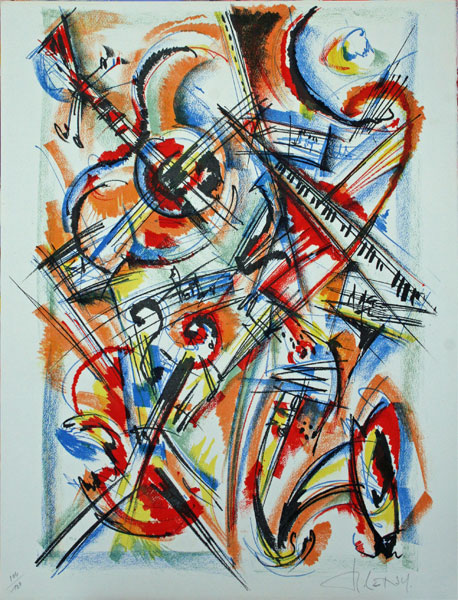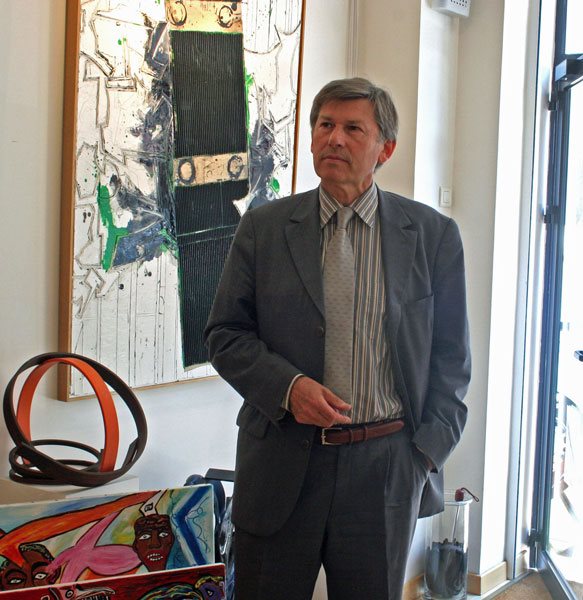 |
|
La vente de la collection Jacques Doucet en 1972 a permis de redécouvrir l'Art déco aux collectionneurs puis progressivement au grand public. C’est à partir de ce moment que le sculpteur Gustave Miklos, figure emblématique de ce style, vénéré dans les années 1920-1930 et tombé dans l’oubli après la Deuxième Guerre mondiale, retrouve la place qu’il mérite sur la scène artistique internationale. Néanmoins, alors que ses œuvres sont devenues de plus en plus recherchées dans le monde, il est resté pratiquement inconnu jusqu’au début du 21ème siècle dans son pays natal, la Hongrie. Bien que Miklos ait définitivement quitté Budapest en 1909, il a toujours porté la Hongrie dans son cœur. Beaucoup de faits témoignent de son attachement à ses origines hongroises. Toutefois ce sentiment, comme dans le cas de Joseph Csaky, n’était pas réciproque. Quelques éléments complétant l’étude biographique très élaborée de Christiane Patkai permettent de démontrer cette triste réalité. |
Art Moderne et Contemporain après 1945
Biographie Jean-Paul LALLEMAND
Rosenberg & Co. Françoise Gilot Biography
 |
|
Published 15/04/2024 - Born in France in 1921, Françoise Gilot was a remarkable artist whose expansive oeuvre bridged twentieth-century avant-garde and contemporary aesthetics. After completing a degree in English literature in 1938 and briefly attending law school, Gilot began her formal artistic education. In 1941, she began studying with Hungarian painter Endre Rozsda and took classes at the Académie Julian. Two years later during her first gallery exhibition, Gilot met Pablo Picasso. The pair maintained a relationship from 1946 until 1953, during which they had two children, Claude and Paloma. |
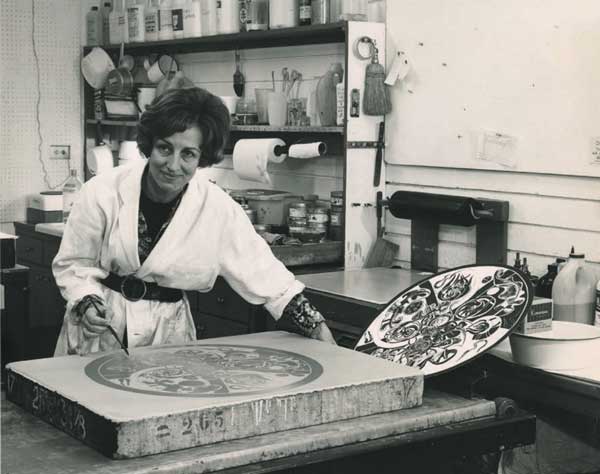 |
|
Black and white photograph of Gilot working at the Tanstone Group in LA, 1971. Image courtesy of The Philip and Muriel Berman Museum of Art. |
|
Around 1946, Gilot deserted oil paintings in favor of graphite, and occasionally gouache, on paper. Gilot's early drawings can be seen in the exhibition and range from portraits and still lifes to abstract works in which she explored formal and symbolic transformations obtainable from simple forms. Gilot began accompanying Picasso to Fernand Mourlot's Atelier in 1950, where she became the first woman to make lithographs in the acclaimed studio—Gilot continued printmaking with Mourlot for decades. |
 |
| Françoise Gilot, Incertitude. Oil on canvas, 2003-2004 |
Biography Alexander Archipenko ROSENBERG & Co
| 12-05-2024- Alexander Archipenko (1887–1964) was a Ukrainian born sculptor. Archipenko attended the Kiev Art School to study painting and sculpture. The Byzantine icons, frescoes, and mosaics in Kiev inspired Archipenko's earliest works. After moving to Paris in 1908, he studied at the Ecole des Beaux Arts and frequently visited the Musée du Louvre, where he was drawn to Egyptian, Assyrian, ancient Greek, and early Gothic sculpture. Archipenko began exhibiting with the Cubists and other avant-garde artists at the Salon des Indépendants in 1910, opened his own art school in Paris in 1912, and joined an artist collective circle known as the Section d'Or, a group that included Léger, Braque, Gris, and Picasso. |
 |
| Alexander Archipenko working on Torso in Space, 1935; image courtesy of The Archipenko Foundation |
|
Influenced by Picasso and Braque, Archipenko developed a sculptural form of Cubism using interlocking and overlapping solids and sculptural voids to show various views of the figure simultaneously. Archipenko was interested in breaking the figure into geometrical forms and, like the Futurists, sculpted figures in motion. Archipenko's legacy of experimentation is characterized by an unconventional mix of materials such as metal, wood, glass, wire, and paint and mixed media works combining bronze, granite, and turquoise. In 1924, he invented and patented the Archipentura, a new kinetic painting/sculpture mixed media art form. |
Anna Weyant Biography Gagosian Gallery
 Anna Weyant Biography Anna Weyant Biography
Born in 1995 in Calgary, Alberta, Canada, she is one of the most talented artists of her generation - Thanks to Larry Gagosian, great talent discoverer she is taking an important place among the great creators of our time. Lives and works in New York, NY. - https://gagosian.com/ About Anna Weyant The hapless subjects of Anna Weyant’s indelible paintings and drawings are recurrently tested by everyday circumstances, weathering what the artist has described as “low-stakes trauma.” In these precisely rendered scenes, figures—most often young and female—find themselves embroiled in tragicomic narratives with an ironic twinge, offering a dreamlike insight into the capacity of popular culture and social convention to manufacture and distort gestures, rituals, and signifiers of femininity. But far from presenting her protagonists as merely symbolic, Weyant remains sensitive to their human idiosyncrasies and contradictions, picturing characters who are endearing, mysterious, and wholly themselves. In her crystalline still-life compositions, meanwhile, everyday objects adopt an uncanny, portentous air. Weyant was born in Calgary, Canada, in 1995. After earning a BFA in painting from the Rhode Island School of Design, she relocated to New York, then studied painting at the China Academy of Art in Hangzhou. Moving back to New York, she worked as a studio assistant while pursuing her own practice. Among her first exhibited works is a sequence of darkly cinematic canvases depicting a dollhouse—modeled after one that she owned as a child—and its young female inhabitants. A later series deconstructs the appearance of American suburbia in Lifetime’s made-for-television movies, casting it as a surreal realm in which violence and disaster lurk just beneath the surface. In her still lifes, Weyant depicts fruit, flowers, and other items in a similarly unsettling light; Lily (2021), for example, juxtaposes the titular bloom with a revolver bound in gold ribbon. In these and other works, Weyant employs a somber, muted palette of deep greens, dusty pinks, and deep black. She also draws on art historical and present-day influences, from seventeenth-century Dutch masters such as Frans Hals and Judith Leyster to twentieth-century mavericks like Balthus to contemporary painters Jennifer Packer and Ellen Berkenblit. As revealed in her contributions to group exhibitions including and I will wear you in my heart of heart at FLAG Art Foundation, New York (2021); Artists Inspired by Music: Interscope Reimagined at the Los Angeles County Museum of Art (2022); and Women of Now: Dialogues of Memory, Place & Identity at the Green Family Art Foundation, Dallas (2022), Weyant displays a deep understanding and appreciation of her work’s roots and parallels while eliciting an immediate and emotional response. |
BIOGRAPHIE DE LAURENT GUGLI
Interview de Lionel Sourisseau
|
|
|
Culture Art & Vision X Lapostroff - Studio Kallico Amoureux de couleurs chaudes et de poésie, Lionel Sourisseau a trouvé sa voie en passant de la peinture traditionnelle à la peinture acrylique. En posant un regard coloré sur le monde, ses œuvres étincelantes et bigarrées suscitent la curiosité et stimulent l'imaginaire. Réalisation : Sylvestre Bary Un projet Culture Art & Vision - 2020 - https://www.culture-av.fr |
Isabel Margarita Haeussler Biography
Biographie Roger Lersy (1920-2004)
Oscar Katcharov Biography

Oscar KATCHAROV (né en 1924) : Huile sur toile dimensions 130 x 125 cm signée en bas à droite et contresigné au dos et datée 1972, intitulé Moscou Trinité. Collection privée K . N. Paris
Soviet Literature" 1990
Irina Chepik
THE ARTIST'S SOLFEGGIO, OR TEN COLOURS OF THE RAINBOW
Oskar Kacharov's studio is in the centre of Moscow - at the down-town end of Gorky Street (now Tverskaya st.) No lush studio, though, rather modest and badly in need of renovation. But the district is surely prestigeous - look through the window and you're looking directly at the big clock on the central Post Office, and down below - the bustle in Gorky Street. The clock is ticking off time into eternity, the bustle and noise are distracting. But not for Kacharov - nothing can distract him. He's found of the incessantly milling crowds and permanent chaos of the capital. His studio is constantly filled with friends, pupils, fellow-artists, musicians, architects, theatre people.
Rezo Gabriadze, a talented playwright, artist and sculptor, working in film, drama and puppet theatre, once wrote to him, "Dear Oskar, I know few artists as dedicated as you are. That must be painfully hard. What I like about you as a person and a painter is your sense of measure, your nobility and artistry. Thank you for your warm tones and for your cold tones and for their correlation."
The words "painfully hard" are not merely lip service. Kacharov was never spoilt by fortune's favours. He is bubbling with the energy of resistance. He rejects attempts to place him, his views and his painting among the crop of discoveries permitted in the recent years by glasnost. he has never before craved success regardless of the cost involved and so has never been mentioned in the press for some 40 years.
Oskar Kacharov, the son of a doctor, was born in 1924, in Kiev. He remembers his father who was killed in the Second World War with tenderness and gratitude. His mother was a highly cultured woman who encouraged his artistic interests, and herself had great knowledge and understanding of art.




